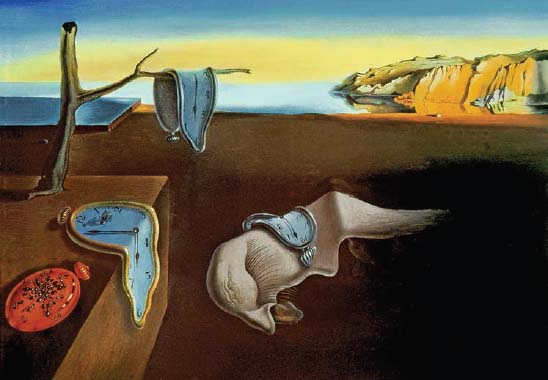The Modern World During and After the World Wars, C. 1914–1960Dada and Surrealism |
What is the meaning of The Persistence of Memory? |
The Persistence of Memory (1931) is Salvador Dali’s most famous painting. In this work, Dali depicts languid, melting clocks draped over an arid, desert landscape. Unlike many of the other large, abstract works being produced at the time, The Persistence of Memory is quite small, not much bigger than an ordinary piece of paper. It is highly detailed and uncomfortably realistic for such a strange picture. Against a smooth and seemingly infinite horizon, are four liquid clocks. At the center, one of these clocks (really more of a pocket watch), curls over what appears to be a boneless, fish-like face. Another clock oozes off the side of a table-like surface, while another rests upside down, black ants aggressively gathered atop it. Dali himself compared the objects in the painting to melting Camembert cheese, and the entire scene is fixed in an impossible state of timeless transformation. Although there can be no definitive definition of this painting, the work is a meditation on the unfixed nature of time and space.

The Persistence of Memory (1931) by surrealist artist Salvador Dali, is one of his most famous paintings, and one of the most recognizable paintings of the twentieth century. The work explores themes of time and change. (Art courtesy The Bridgeman Art Library, © Salvador Dali, Fundaciö Gala-Salvador Dali, Artists Rights Society [ARS], New York, 2013.)
